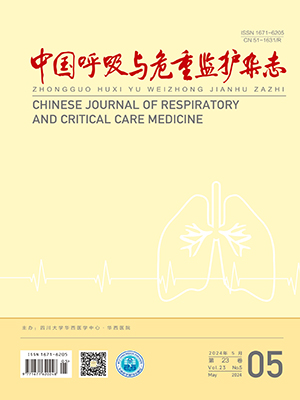| 1. |
Briggs N, Campbell S, Gupta S. Advances in rapid diagnostics for bloodstream infections. Diagn Microbiol Infect Dis, 2021, 99(1): 115219.
|
| 2. |
Timsit JF, Ruppé E, Barbier F, et al. Bloodstream infections in critically ill patients: an expert statement. Intensive Care Med, 2020, 46(2): 266-284.
|
| 3. |
He YJ, Xu JQ, Shang XP, et al. Clinical characteristics and risk factors associated with ICU-acquired infections in sepsis: a retrospective cohort study. Front Cell Infect Microbiol, 2022, 12: 962470.
|
| 4. |
Zhang LM, Zhang F, Xu FS, et al. Construction and evaluation of a sepsis risk prediction model for urinary tract infection. Front Med (Lausanne), 2021, 8: 671184.
|
| 5. |
Yue SR, Li SS, Huang XY, et al. Construction and validation of a risk prediction model for acute kidney injury in patients suffering from septic shock. Dis Markers, 2022, 2022: 9367873.
|
| 6. |
Luo MD, He Q. Development of a prognostic nomogram for sepsis associated-acute respiratory failure patients on 30-day mortality in intensive care units: a retrospective cohort study. BMC Pulm Med, 2023, 23(1): 43.
|
| 7. |
Singer M, Deutschman CS, Seymour CW, et al. The Third International Consensus Definitions for Sepsis and Septic Shock (Sepsis-3). JAMA, 2016, 315(8): 801-810.
|
| 8. |
Bloch E, Rotem T, Cohen J, et al. Machine learning models for analysis of vital signs dynamics: a case for sepsis onset prediction. J Healthc Eng, 2019, 2019: 5930379.
|
| 9. |
Iba T, Levy JH. Sepsis-induced coagulopathy and disseminated intravascular coagulation. Anesthesiology, 2020, 132(5): 1238-1245.
|
| 10. |
Tang GX, Luo Y, Lu F, et al. Prediction of sepsis in COVID-19 using laboratory indicators. Front Cell Infect Microbiol, 2020, 10: 586054.
|
| 11. |
Mojumdar EH, Sparr E. The effect of pH and salt on the molecular structure and dynamics of the skin. Colloids Surf B Biointerfaces, 2021, 198: 111476.
|
| 12. |
George AK, Shih A, Regan TJ. Effect of acute ketoacidosis on the myocardium in diabetes. Am J Med Sci, 1996, 311(2): 61-64.
|
| 13. |
Gunnerson KJ, Saul M, He S, et al. Lactate versus non-lactate metabolic acidosis: a retrospective outcome evaluation of critically ill patients. Crit Care, 2006, 10(1): R22.
|
| 14. |
Xie TH, Xin Q, Cao XR, et al. Clinical characteristics and construction of a predictive model for patients with sepsis related liver injury. Clin Chim Acta, 2022, 537: 80-86.
|
| 15. |
Wang D, Li JB, Sun YL, et al. A machine learning model for accurate prediction of sepsis in ICU patients. Front Public Health, 2021, 9: 754348.
|
| 16. |
Zheng YJ, Zhu XJ, Chen YW, et al. Establishment of a novel risk score for in-hospital mortality in adult sepsis patients. Ann Transl Med, 2022, 10(14): 781.
|




